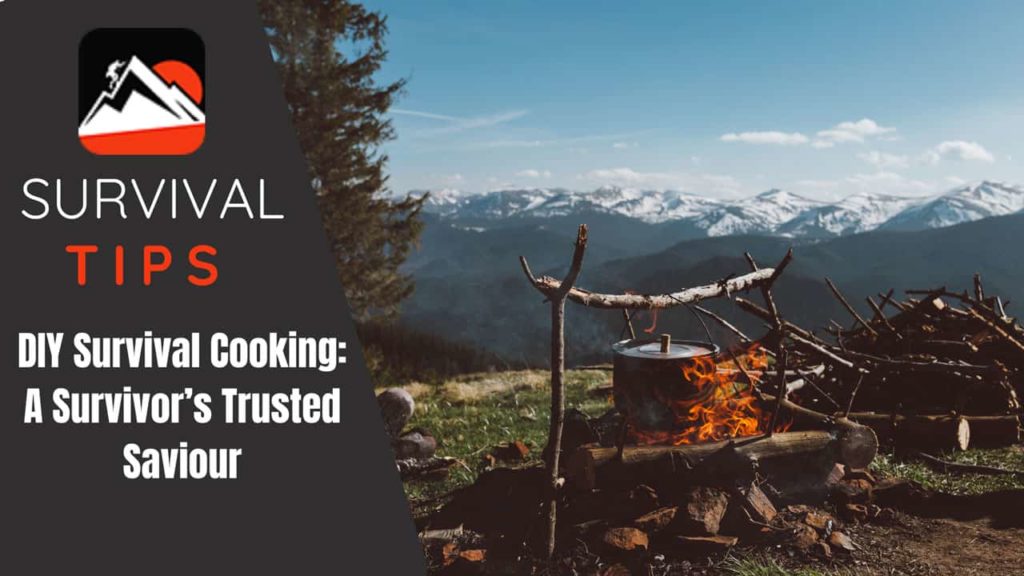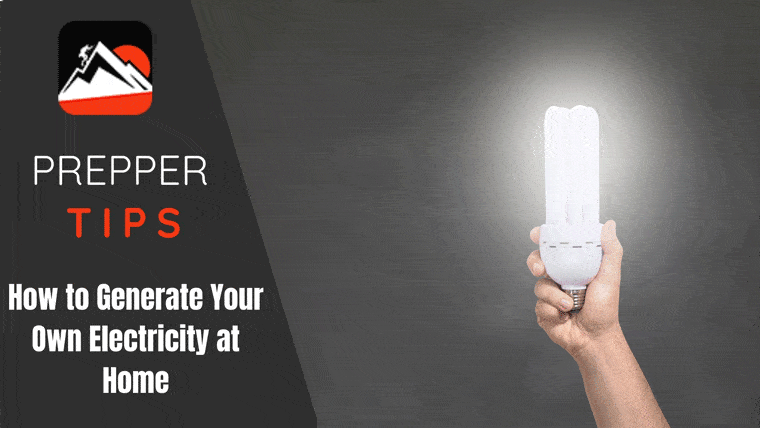Contents
Many of us spend a good portion of our day in our cars commuting to work, school, or chauffeuring our kids to their various activities. Because of this, having a well-stocked emergency kit in your vehicle is essential. A breakdown, flat tire, or unforeseen inclement weather may leave you stuck on the side of the road. These situations can happen to even the most careful driver.
Plan and Prepare
Smart drivers prepare for unexpected situations, such as bad weather, by developing and keeping an emergency kit in their vehicles. Of course, the first order of business is to make sure your car is well-maintained. Check your oil level, keep your tires in good condition, and keep the fluids topped up. It’s also advisable to ensure your fuel level is above the halfway point in case you become stranded and need to run the engine.
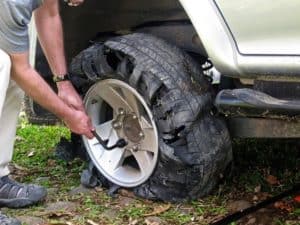
Some individuals think having a cell phone means they can just call for assistance. What if there is no signal in your area or cell service has been interrupted? In any scenario, calling for help should never be your only plan. Always be prepared to save yourself!
What’s in my vehicle emergency kit?
Although most of us check the weather forecast before we leave the house, bad weather can strike when we least expect it. Now is the time to put together a kit that can see you through a variety of situations. Of course, you can tailor this list based on the amount of space you have available, the season, and environment—as well as your particular skill set and desired level of comfort.
Essential items for any emergency car kit
Regardless of the season, all drivers should load up their kits with basic supplies that could be useful in an emergency. Here are the must-have items that should be part of every car kit:
First-aid kit
A first aid kit will help treat injuries until help arrives. Pack basic non-prescription drugs in your emergency medical kit, such as pain relievers, sterile pads, bandages, gauze pads, soap, and micropore tape. You should also keep a small supply of any prescription medications you need in case you’re stuck for a while.
Fire extinguisher
A portable fire extinguisher is useful in the event of a vehicle fire. The ones intended for motor vehicles use a dry formula and are typically rated ABC or BC. Class A fires involve ordinary combustibles, such as wood or paper. Class B fires are those that involve combustible or flammable liquids (gasoline, kerosene, and diesel fuel), while Class C fires involve energized electrical equipment (switches, batteries, and panel boxes). Fire extinguishers that use dry formulas occasionally need to be turned upside-down to prevent the chemicals from caking at the bottom.
Learn more about what to do in the event of a vehicle fire from the U.S. Fire Administration.
Extra Food and Water
We take the abundance of food and water for granted when things are normal. In the case of an emergency, however, you may not have access to either. Include packaged food (such as granola bars) and a few bottles of potable water in your kit. Water is also useful for sanitation and washing injuries. Be sure to occasionally check the expiration dates of any food products.
Flashlight
Flashlights are a staple of any emergency kit. They’re useful for security, or when you’re checking the car over for any damage. A (preferably weather-proof) LED flashlight with long-life batteries will ensure you’re never left in the dark.
Three Reflective Warning Triangles/Road Flares
Give motorists the heads-up that you’re stuck at the roadside! Reflective warning triangles can also be used as a distress signal in an emergency. Have at least three reflective warning triangles to place at 50-foot intervals to warn oncoming traffic about your presence on the side of the road. Road flares serve the same purpose, but can also start a fire in a pinch.
Jumper cables
A car owner should know how to use jumper cables and store them in their vehicle for emergencies. Jumper cables will start your car as well as provide backup power for your GPS navigation unit. Jumper cables are like first aid kits—everyone on the road should carry them at all times.
 Blankets
Blankets
A blanket is one of those basic survival items everyone needs. Reflective blankets are especially useful for creating shade in summer or staying warm in winter. Even better, they don’t take up a lot of room.
Sanitation Items
Never forget the importance of proper hygiene! Supplies such as wet wipes, tissues, plastic bags, and the like will make your time in the car a lot more comfortable. Should a situation arise where you need to stay with your car for more than a few hours, you’ll be thankful you have them.
Tools and Repair Items
- Jack and lug wrench
- Portable compressor
- Pressure gauge
- Foam tire sealant
- Spare tire
- Electrical and duct tape
- Bungee cords
- 550 paracord
- Rags
- Rescue tool (such as a car safety hammer with seatbelt cutter)
- Multi-purpose tool
- Pocket knife
Other
Entertainment items, such as a deck of cards, will keep things from getting too boring as you wait for a tow. If you have children, a couple of glow sticks can do a lot to reduce stress (the glow sticks can also provide some illumination in the dark).
Now that we have the essentials covered, let’s get into the weather-specific gear you should always keep in your car. These vary somewhat based on where you live, but the occasional hazardous weather event can happen anywhere. Use your best judgment to decide which of these items should go in your emergency kit.
Rain
A sudden downpour or flood will make driving especially difficult, if not impossible. Reduced visibility and the danger of hydroplaning mean you might have to pull over. If you get a fender bender or a tire blows out during the storm, you’ll want to have a poncho and an umbrella around so you can deal with the issue without getting soaked. However, if there’s lightning, it’s safer to stay in your car and avoid contact with metal objects.
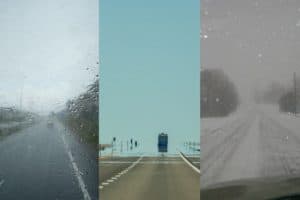
Hail can be particularly dangerous as it could shatter the windows. Stop your car, turn away from the glass, and cover yourself with a blanket, any clothes you have on hand. Visit this guide from Liberty Mutual for more tips on surviving wet weather conditions on the road.
Extreme Heat
In hot weather, one of the biggest threats you face is the car engine overheating. Never allow the coolant level to get too low (read about how to check your engine and add radiator fluid). A few gallons of water stored in the trunk can be used to cool the engine down—and prevent you from becoming dehydrated.
Other items you might want to have are sunscreen, hats, and breathable clothing to protect you from the sun’s rays. You might hesitate to pack all these extras, but UV damage is no joke!
Snow
If you live in a climate that’s prone to snow, you probably already have an ice scraper and brush somewhere in your vehicle. You should also include chains for the tires (where they’re permitted), cat litter, and a shovel. The cat litter will help your tires gain traction should you need to pull over during a snowstorm, and you might need the shovel when it’s time to dig out.
If you’re going to be waiting a while, you’ll also want to have gloves and warm clothes.
Be Safe on the Road
If the weather is bad, stay off the road as much as possible. If you absolutely must drive, be prepared for any contingency. These supplies will help keep you, your passengers, and your vehicle in good condition. After all, you never know what’s going to happen.
Image credit via Flickr Creative Commons: Henry S., Andres R., KOMUnews, Charles W., and Vytautas Š.
About the Author: Angelica Garcia is a prepper and contributor at The Tactical Guru, where she writes about topics relating to preparedness and personal safety.

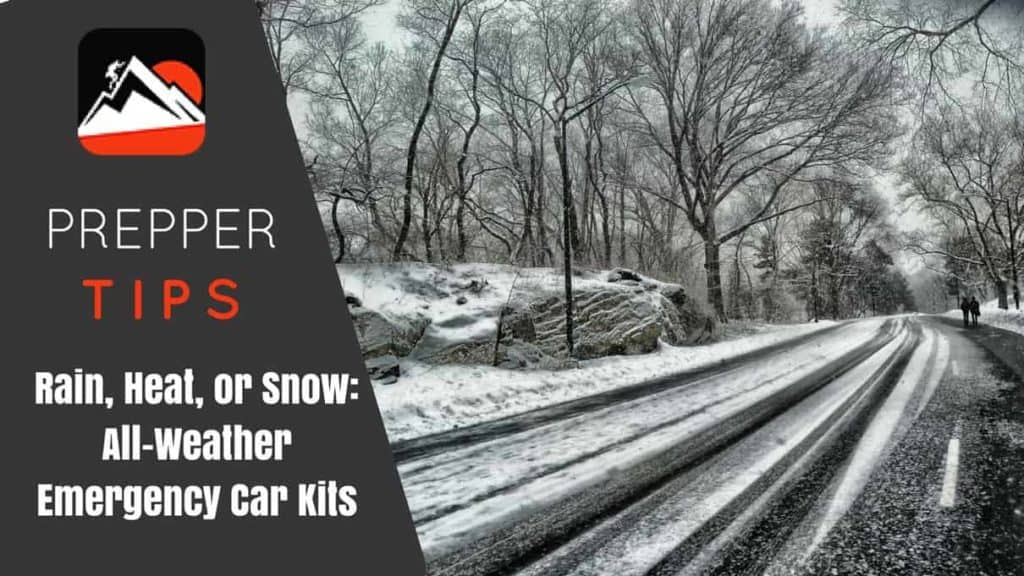
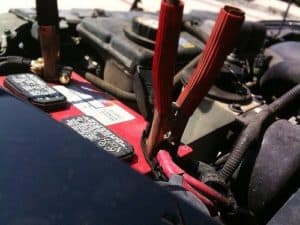 Blankets
Blankets
